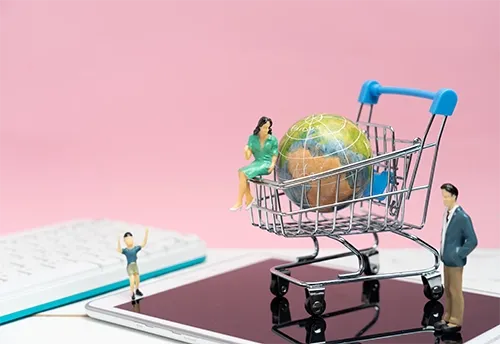E-commerce, or electronic commerce, refers to the buying and selling of goods and services over the internet. Since its inception in the early 1990s, e-commerce has transformed the retail landscape, offering unprecedented convenience, accessibility, and efficiency. This article explores the evolution, current impact, and future prospects of e-commerce.
Evolution of E-commerce E-commerce began with the advent of the internet in the 1990s. Early pioneers like Amazon and eBay started as online marketplaces for books and collectibles, respectively. As internet technology advanced, so did e-commerce platforms, expanding to include a wide range of products and services. The 2000s saw significant growth with the development of secure online payment systems, increased internet penetration, and the rise of mobile technology. Today, e-commerce encompasses various models, including B2C (business-to-consumer), B2B (business-to-business), C2C (consumer-to-consumer), and C2B (consumer-to-business).
Impact of E-commerce
Convenience and Accessibility: E-commerce offers consumers the convenience of shopping from anywhere at any time. Online stores are open 24/7, providing a level of accessibility that traditional brick-and-mortar stores cannot match. This convenience extends to the ability to easily compare prices, read reviews, and find unique products from around the world.
Economic Growth: E-commerce has significantly contributed to global economic growth. It has opened up new markets for businesses, particularly small and medium-sized enterprises (SMEs), allowing them to reach a global audience without the need for a physical presence in multiple locations. This expansion has led to increased sales, job creation, and innovation.
Consumer Behavior: The rise of e-commerce has shifted consumer behavior. Shoppers now expect seamless online experiences, personalized recommendations, and fast delivery. The availability of detailed product information and customer reviews has empowered consumers to make more informed purchasing decisions.
Technological Advancements: E-commerce has driven advancements in various technologies, including artificial intelligence, big data, and blockchain. AI is used for personalized marketing, chatbots, and fraud detection. Big data analytics helps businesses understand consumer behavior and optimize their operations. Blockchain technology enhances security and transparency in transactions.
Future Prospects The future of e-commerce looks promising, with several trends set to shape its evolution:
Mobile Commerce: The increasing use of smartphones is driving the growth of mobile commerce. Businesses are optimizing their websites and apps for mobile devices, providing a seamless shopping experience on the go.
Augmented Reality (AR) and Virtual Reality (VR): AR and VR technologies are expected to revolutionize online shopping by offering immersive experiences. Consumers will be able to visualize products in their environment before making a purchase, enhancing their confidence in online shopping.
Sustainable Practices: As environmental awareness grows, e-commerce companies are adopting sustainable practices. This includes reducing packaging waste, using eco-friendly materials, and optimizing delivery routes to lower carbon emissions.
Social Commerce: Social media platforms are becoming significant e-commerce channels. Features like shoppable posts and live-stream shopping allow consumers to purchase products directly from social media apps, blending social interaction with shopping.
E-commerce has come a long way since its early days, evolving into a critical component of the global economy. Its impact on consumer behavior, business operations, and technological advancements is profound. The future of e-commerce is bright, promising greater convenience, efficiency, and sustainability.




